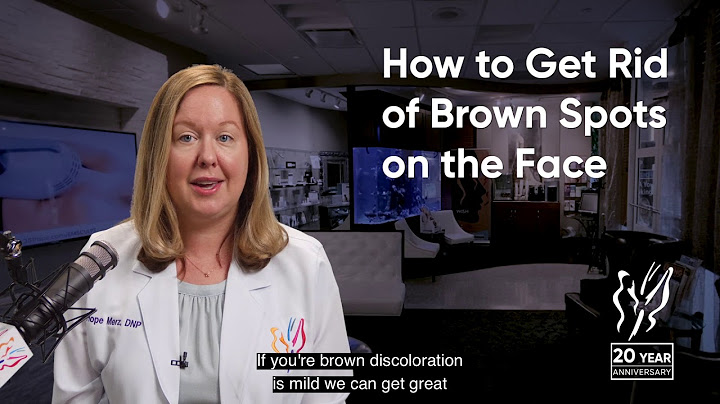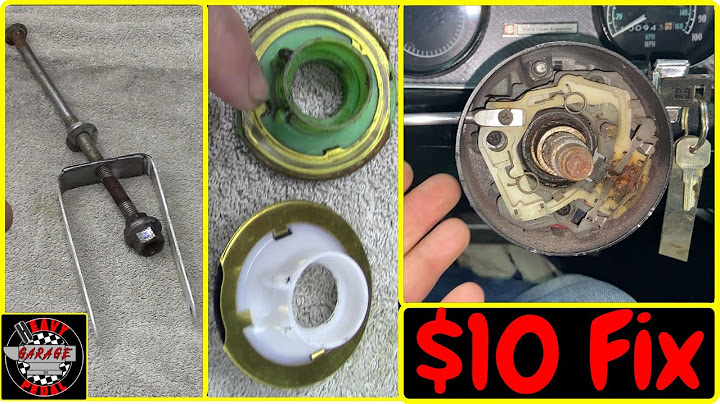Imagine this scenario… Show
You’re a commercial flooring company. You’ve just landed a decent job to replace the old carpeting with brand-new modern looking vinyl tiles in a 5000 sq. ft. commercial building. So, you and your crew get to work early on a Saturday morning, knowing you’ve got the entire weekend to get the job done. No sweat. You’ve done this before, and it’s going to be straight forward. Your first task is to rip out that old carpet flooring. So you get to work… and that’s when you start discovering this layer of carpet adhesive residue on the concrete to keep the carpet from buckling or coming off. Not necessarily a bad thing, but you’re hoping it’s going to be easy to remove. So you keep removing the carpet and find that the glue is literally wall to wall. It’s around the perimeter and edges. It’s covering every inch of the floor. And there’s “gobs” of it. In thick, dense layers too. And it’s stubborn because it’s been there for years. You didn’t expect to find so much glue on the floor. You now know it’s going to take you a while to remove that glue properly, and you know it’s going to add to your labor cost… And that’s going to eat into your profits. Naturally, you’re not happy about this. So, you do what any person does in a situation like this. You whip out your iPhone and do a Google search for… What’s the Fastest Way to Remove Stubborn Carpet Glue from Concrete Floors?This is a common question we often get asked. So here are some suggestions to help you deal with similar situations so that you avoid losing money on your next job. 4 Things You Need to Know Before You Start Removing Glue Residue from Floors.Before starting any job, it’s essential to know the following to determine what process, equipment, or products you’ll need to get the job done effectively and efficiently. Here are 4 things to consider:
What type of subfloor are you dealing with?The first thing you must do is determine the type of subfloor you are working with. Is it concrete, stone, tile, or wood? If you’re dealing with wooden subfloors, the process of removing the glue will be different than if the subfloor is concrete or stone (like granite, marble, and limestone). This article focusses on the more common commercial situations of removing old glue from concrete or stone floors. What type of glue are you dealing with?Once you know the floor is concrete or stone (granite, limestone, or marble), the next task is to identify the type of glue. There are many glue manufacturers out there. And each adhesive can have different compositions. Plus, the glue formulation itself, can change over time. So it can be a head-scratcher to identify the exact type of glue. However, a simple way to understand what type of glue you are dealing with is to see if it fits into one of these two types: The Two Common Types of GlueThe first type of glue is the beige/yellow/brown looking type that hardens in chunks. and… The second type of adhesive is the dreaded black asphalt type that dries into a level coating. This is usually found beneath vinyl tiles and flooring.  Beige/Yellow/Brown Looking Glue  How to Remove Beige/Yellow/Brown Looking Adhesive Residue If you come across the first type – beige/yellow/brown – you might consider “testing” how well it has bonded to the floor by using a scraping tool to nudge-off the dried glue. If it works, then you can remove all or most of the dried-up glue using the scraper. But what if the glue does not come off easily? Or what if it leaves behind “scabs” of glue stuck to the floor? If that’s the case, you may want to consider using a chemical solvent glue remover like Centaur’s Glue-Off. Here’s how to use Glue-Off… Take a mop and apply the solvent liberally over the area where the glue is to be removed. Then let the Glue-Off “dwell” for a few minutes – i.e., let the glue remover do its work. Depending on the size of the work area, you can then either remove the glue manually by scraping the adhesive material by hand (for smaller spaces), or… You can use a low-speed (e.g., 175 RPM) floor machine, like Centaur’s Rabbit-1 or Stonechat, with a floor grinding tool. Grinding tools like the Diamabrush mastic removal tool or a Centaur Magpie (drive plate) with heavy grit Gimlets (segmented diamonds) are ideal for larger areas 1000 sq. ft. or more.  Mastic Removal Tool  Once you have removed the glue from the floor, sweep up the larger residue chunks, then use a vacuum to pick up the remaining residue. Finally, mop up the area so that it is ready for the next step. How to Remove Black Asphalt Adhesive Residue If you encounter this type of glue – the black asphalt type – you will almost always need to use a solvent and an appropriately tooled machine. Depending on the type of glue, you may need to use a stronger solvent like Centaur’s Full Force. Using a mop, apply the solvent liberally over the area where the glue is to be removed and let the solvent “dwell” for a few minutes. Then use a low-speed floor machine, like Centaur’s Rabbit-1 or Stonechat fitted with a floor grinding tool. In this case, consider using a Magpie (drive plate) with heavy grit segmented diamonds or Pyramid-shaped diamond tools to remove the glue. If the glue is particularly stubborn, you might consider using some additional weight on the machine, however, take care not to cut into the subfloor. [CAUTION NOTE #1] In some situations, you may not be able to use a solvent, which means you’ll have to remove the glue by mechanical grinding only. If this is the case, you’ll want to first test the glue residue for asbestos before you start grinding. This is because this type of glue may have had asbestos mixed in to make it more durable. Ideally, you’ll want to use water when grinding to keep any airborne dust to a minimum. If you cannot use water, make sure you have a commercial HEPA-type vacuum to suck up and contain as much of the dust generated from the grinding process.
Once you have removed the glue from the affected areas, first sweep up the larger residue particles, then use a vacuum to pick up the remaining finer residue. Finally, wash and rinse the floor to remove the excess chemical and residue. Next step after removing the glue: After you’re done removing the glue, you’re ready to either: Reapply fresh glue and lay down new carpet or tile – in which case all you have to do is clean the surface after the glue has been removed Or… Leave the floor uncovered. In this case, you can polish the natural floor surface and bring it to a shine. To learn how to do this, Centaur can provide you with How to Restore/Polish a Stone Floor or How to Restore/Polish Concrete guides. PRO TIP #1: If providing a quote for this type of work, note that it is time-consuming, particularly with the black asphalt type of glue. So make sure you know the situation you’re walking into before you agree to take on a job. PRO TIP #2: Make sure to clean your machine and tools after each job by removing any and all glue/solvent mixture stuck to the equipment. This will help extend the life of both the floor machine and the tools. [CAUTION NOTE #2]: When using solvents like Glue-Off or Full Force, be sure to follow the safety instructions provided. This includes ensuring that the room you are working in is adequately ventilated and that there are no open flames nearby. Also, use appropriate personal protective equipment – like masks, anti-slip shoes, and gloves when handling the solvent and the residue. [CAUTION NOTE #3]: If you’re trying to remove glue from a wood (or plywood) subfloor, you have to be particularly careful. Wood flooring is very easy to damage using solvents and scraping tools. Similarly, if you find yourself in the unusual position of trying to remove glue from a ceramic or vinyl flooring, be careful when using a floor machine with “grinding tools.” The Mastic removal tool and drive plate with segmented diamonds are aggressive and will scratch or damage the surface of these floors. If you have any specific questions about how to remove glue from concrete or stone floors safely, economically, and fast, give us a call. We’ll be happy to help you out. You can reach us at 1-905-475-5640. Friendly disclaimer: This article is intended to provide general information only and does not attempt to give you advice that relates to your specific situation or circumstances. Floor surfaces, glue types, the environment, your skills, and experience, etc. all vary and can have an effect on the end results. Always use caution and consult an expert before taking on such jobs. Centaur strongly recommends that you test any method on a small patch first. How do you remove old carpet glue from concrete?How to Remove Carpet Glue from Concrete Floors. Grab a scraper. If there's not a lot of residual glue remaining on the concrete subfloor, it's often possible to scrape it off using a long-handled floor scraper and then sweep it up for disposal. ... . Boil some water. ... . Apply a glue and mastic remover. ... . Use mechanical methods.. How do you clean concrete after removing carpet?Fill a bucket with approximately one gallon of water and a few squirts of dish soap. Thoroughly, mop the concrete floor; wringing the mop out in between to make sure that you do not over saturate the concrete floor with water. Change the water as you go if it becomes too dirty.
How do you remove glue after removing carpet?You just need water and soap.. Mix some boiling water and washing-up liquid.. Pour the mixture over the surface that needs to be cleaned.. Leave it to absorb for a little while.. You can scrub away the glue residues with a scouring sponge.. Finally, dry the surface properly.. What is the best adhesive remover for concrete floors?Klean-Strip Green Floor Adhesive Remover removes adhesives from wood, concrete, metal and masonry. It's easy to use because it stays wet and active for up to 24 hours. Low odor and less harsh on skin.
|

Advertising
LATEST NEWS
Advertising
Populer
Advertising
About

Copyright © 2024 toptenid.com Inc.














